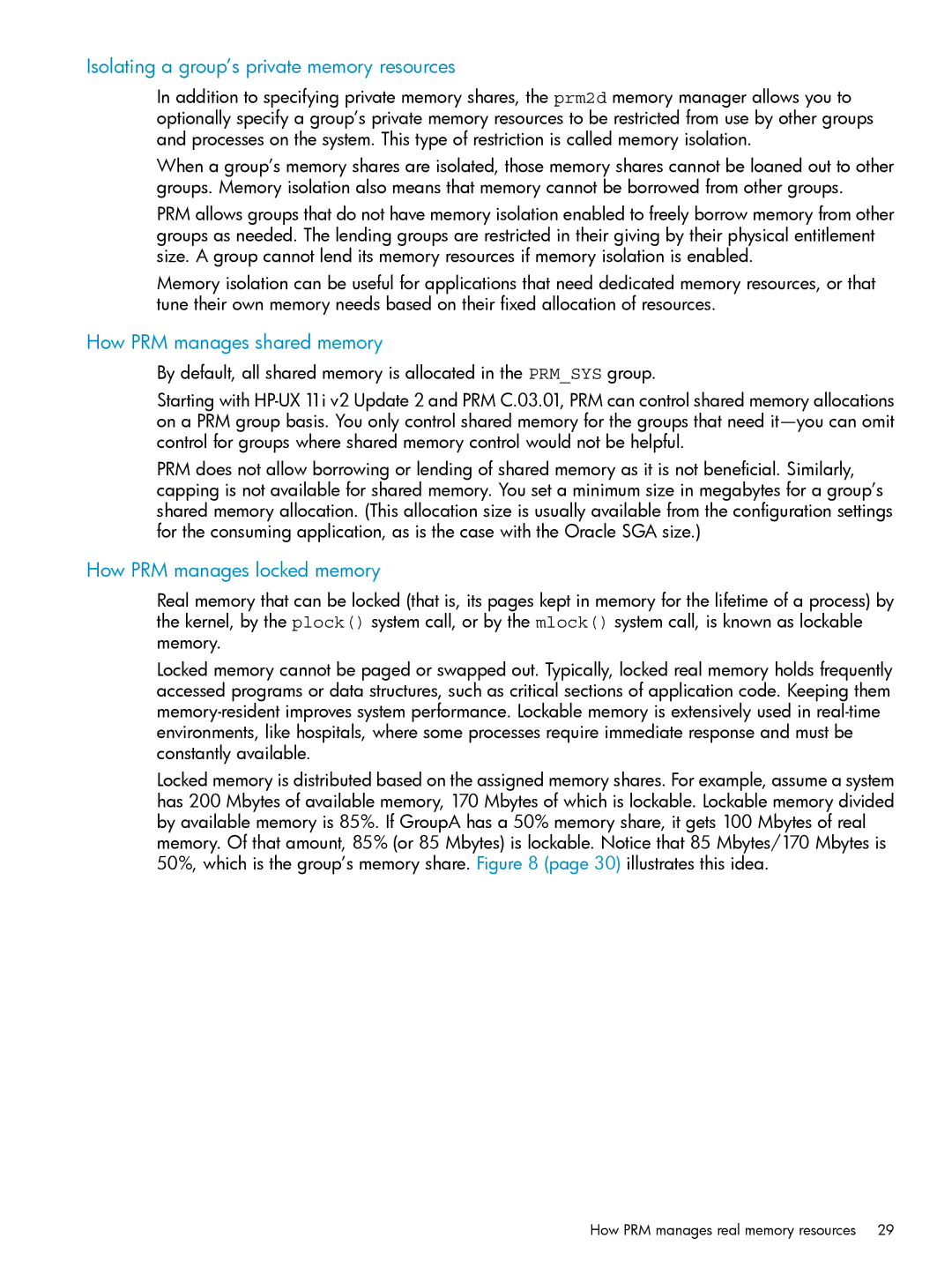Isolating a group’s private memory resources
In addition to specifying private memory shares, the prm2d memory manager allows you to optionally specify a group’s private memory resources to be restricted from use by other groups and processes on the system. This type of restriction is called memory isolation.
When a group’s memory shares are isolated, those memory shares cannot be loaned out to other groups. Memory isolation also means that memory cannot be borrowed from other groups.
PRM allows groups that do not have memory isolation enabled to freely borrow memory from other groups as needed. The lending groups are restricted in their giving by their physical entitlement size. A group cannot lend its memory resources if memory isolation is enabled.
Memory isolation can be useful for applications that need dedicated memory resources, or that tune their own memory needs based on their fixed allocation of resources.
How PRM manages shared memory
By default, all shared memory is allocated in the PRM_SYS group.
Starting with
PRM does not allow borrowing or lending of shared memory as it is not beneficial. Similarly, capping is not available for shared memory. You set a minimum size in megabytes for a group’s shared memory allocation. (This allocation size is usually available from the configuration settings for the consuming application, as is the case with the Oracle SGA size.)
How PRM manages locked memory
Real memory that can be locked (that is, its pages kept in memory for the lifetime of a process) by the kernel, by the plock() system call, or by the mlock() system call, is known as lockable memory.
Locked memory cannot be paged or swapped out. Typically, locked real memory holds frequently accessed programs or data structures, such as critical sections of application code. Keeping them
Locked memory is distributed based on the assigned memory shares. For example, assume a system has 200 Mbytes of available memory, 170 Mbytes of which is lockable. Lockable memory divided by available memory is 85%. If GroupA has a 50% memory share, it gets 100 Mbytes of real memory. Of that amount, 85% (or 85 Mbytes) is lockable. Notice that 85 Mbytes/170 Mbytes is 50%, which is the group’s memory share. Figure 8 (page 30) illustrates this idea.
How PRM manages real memory resources 29
